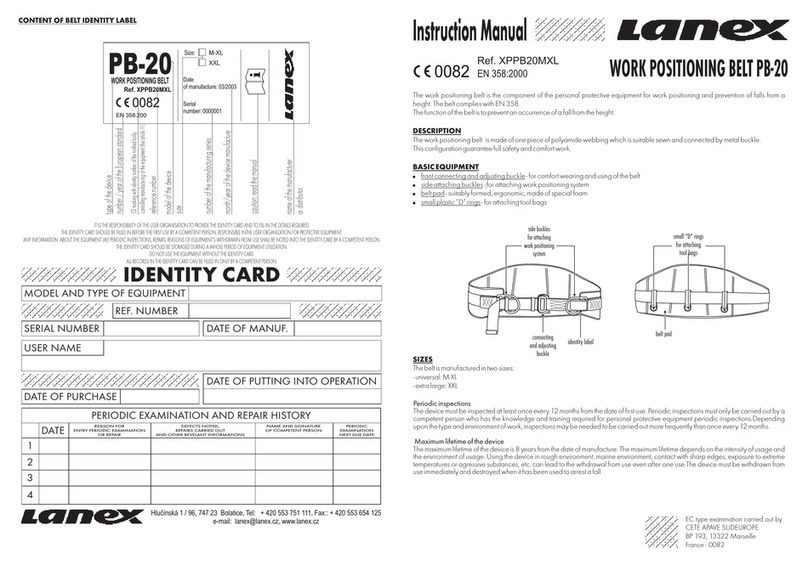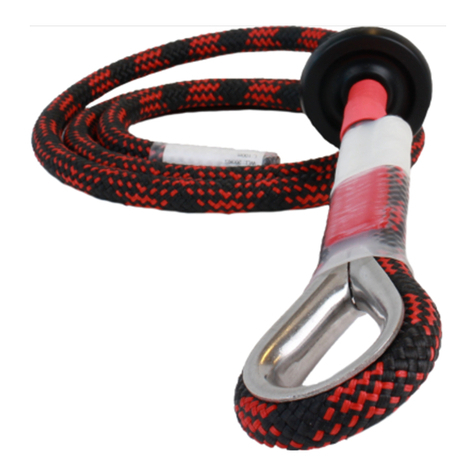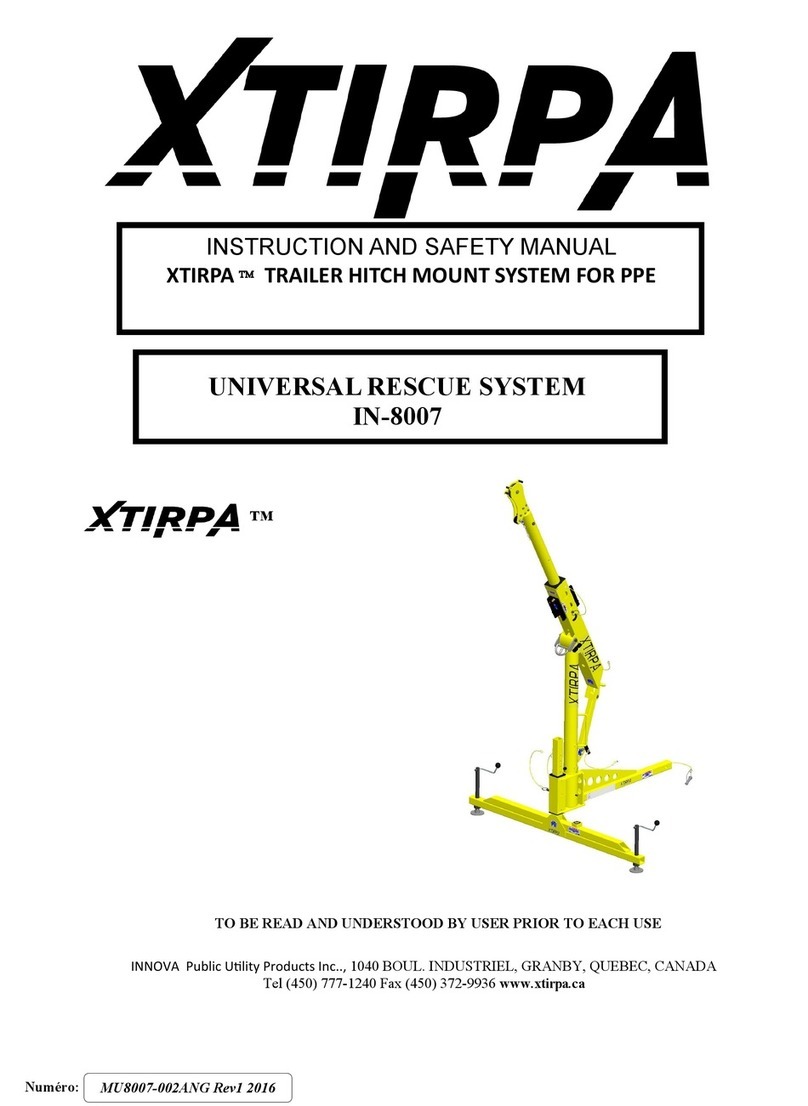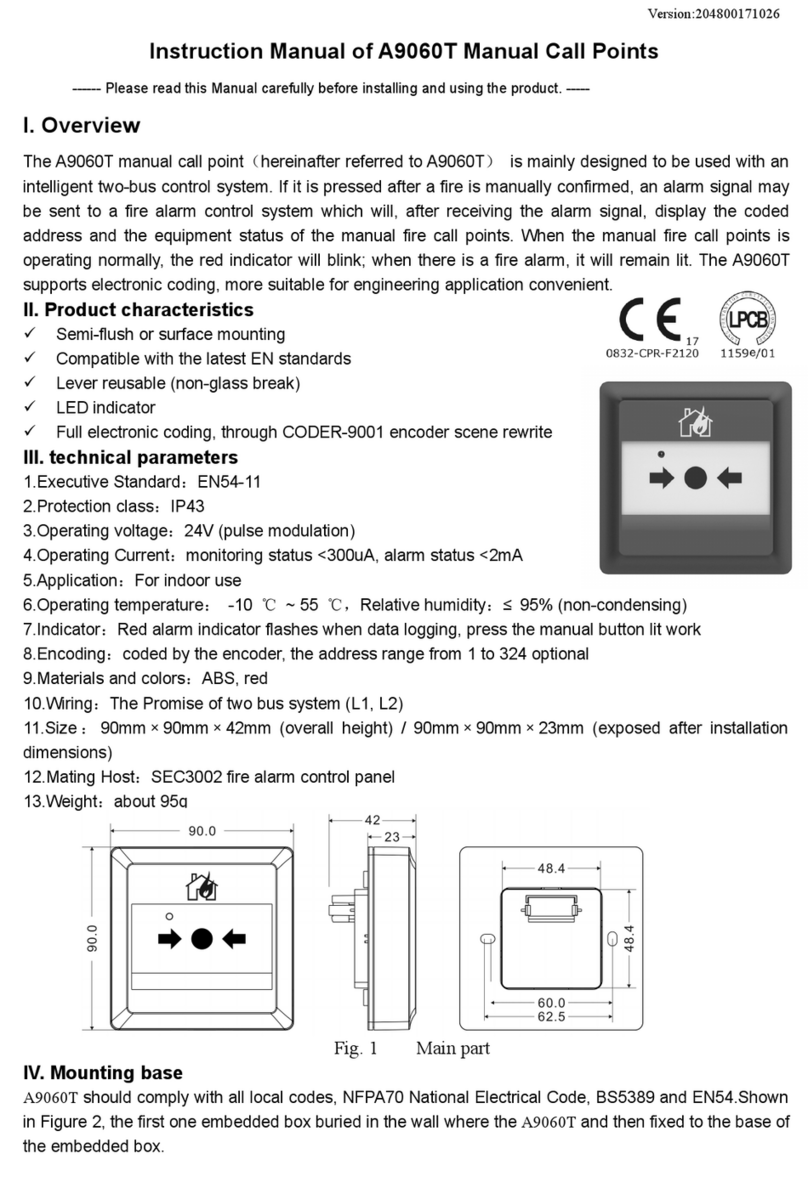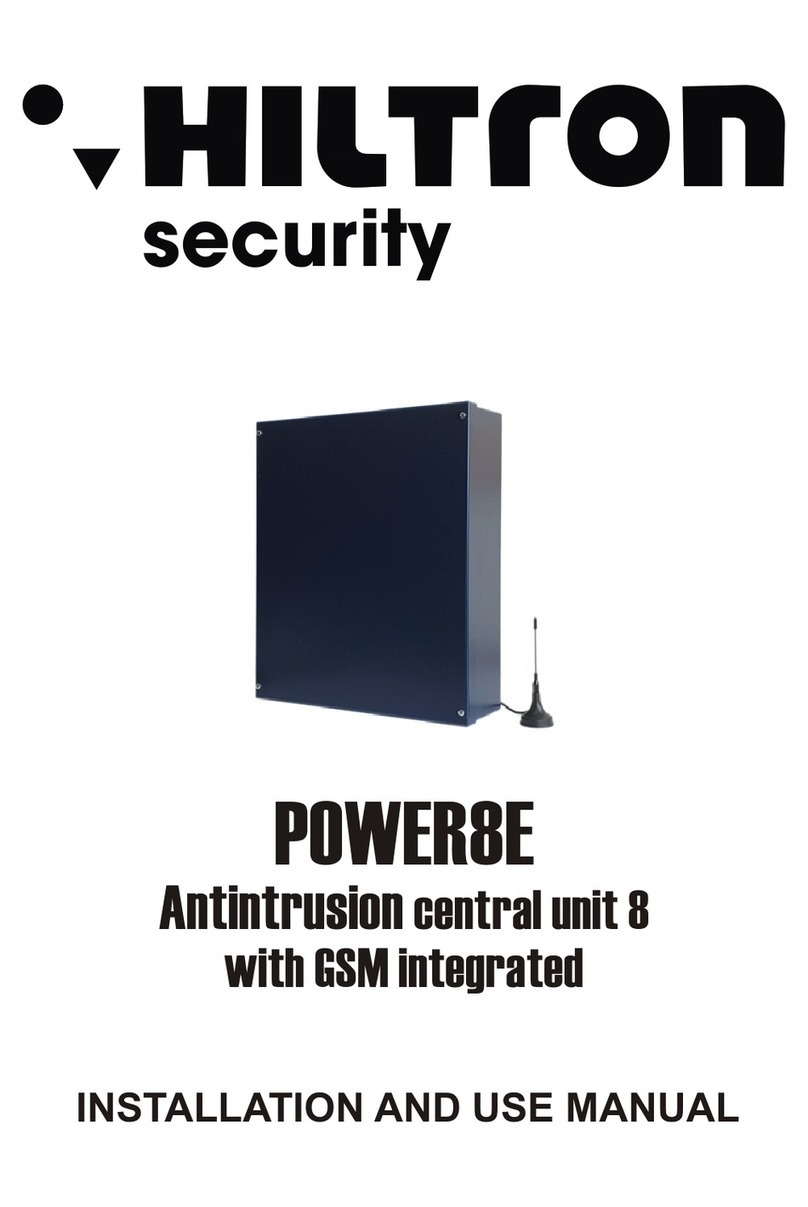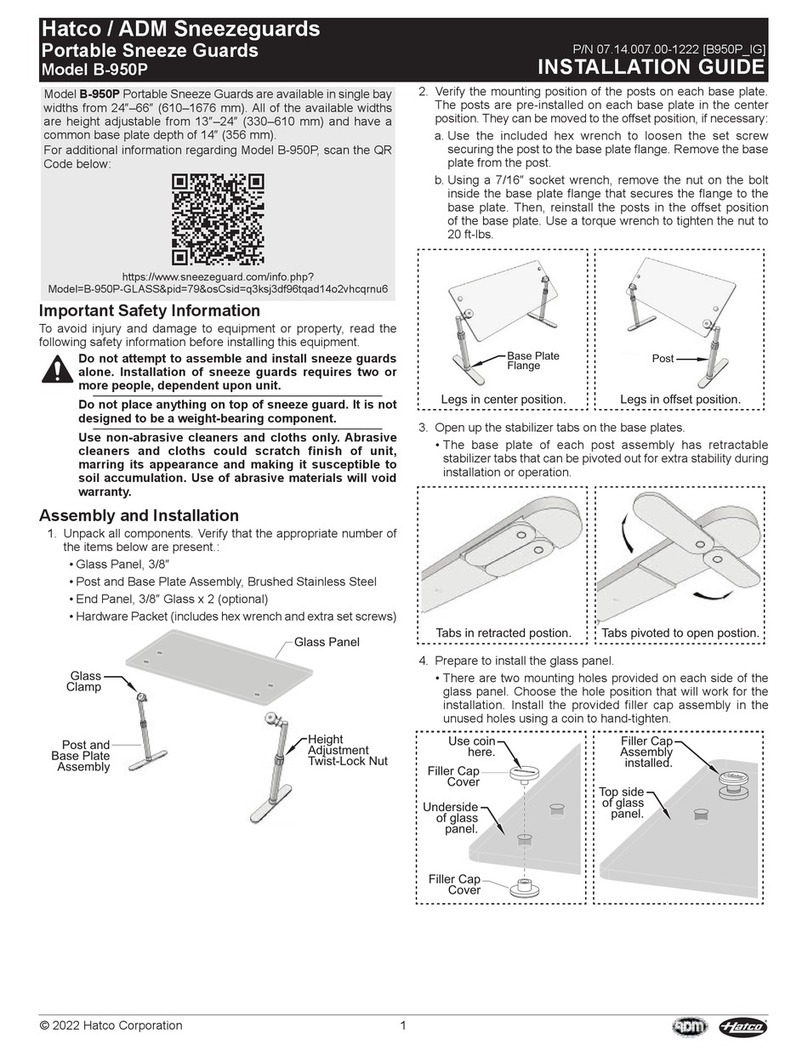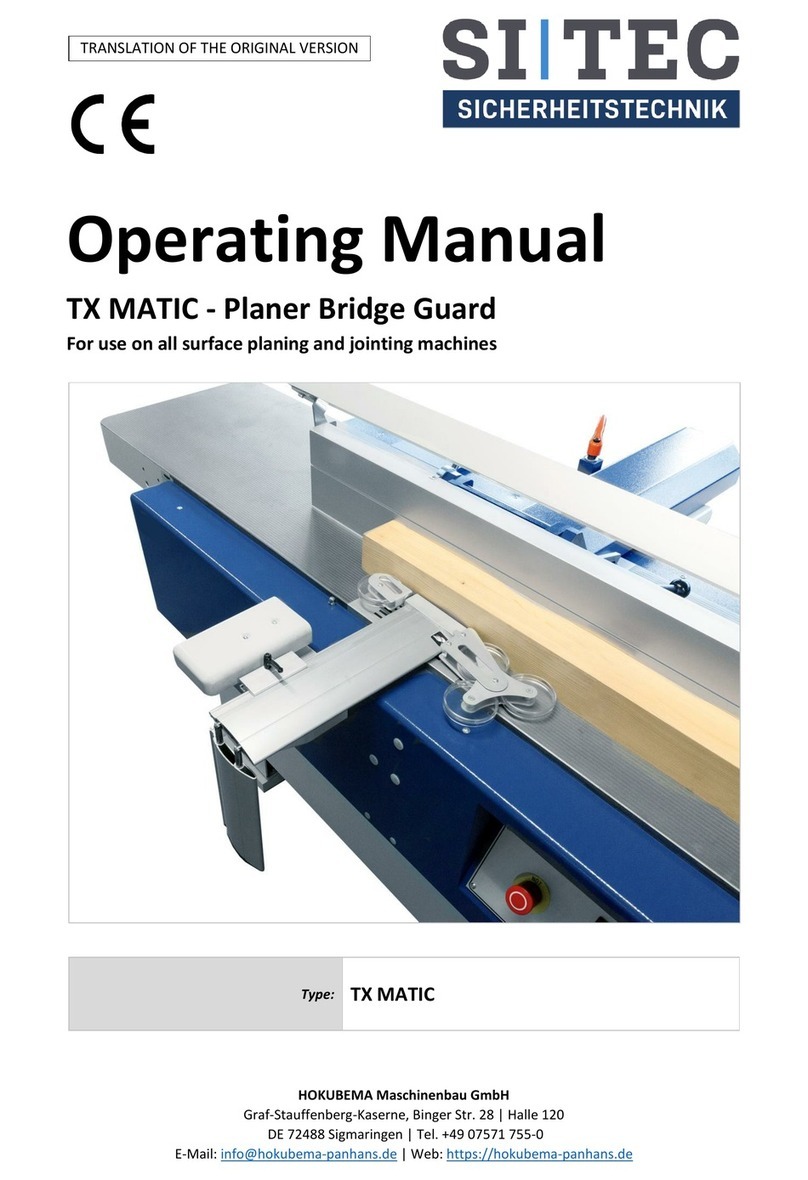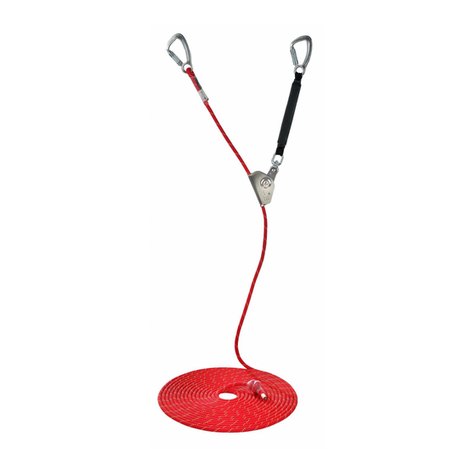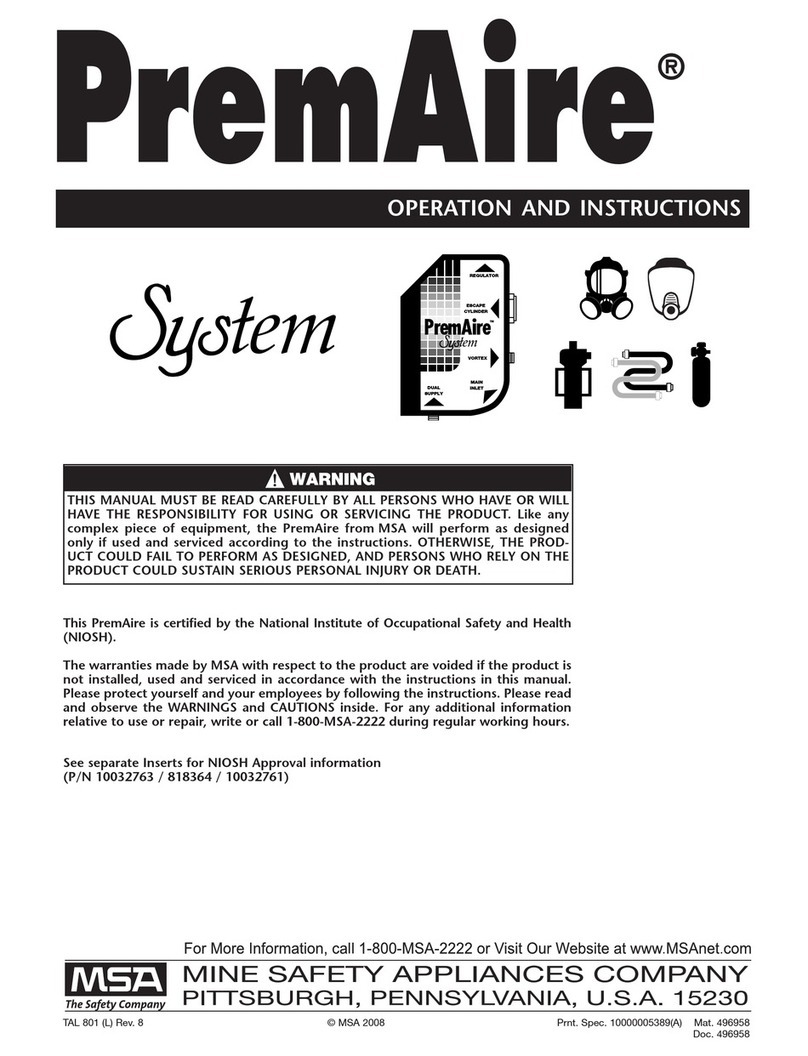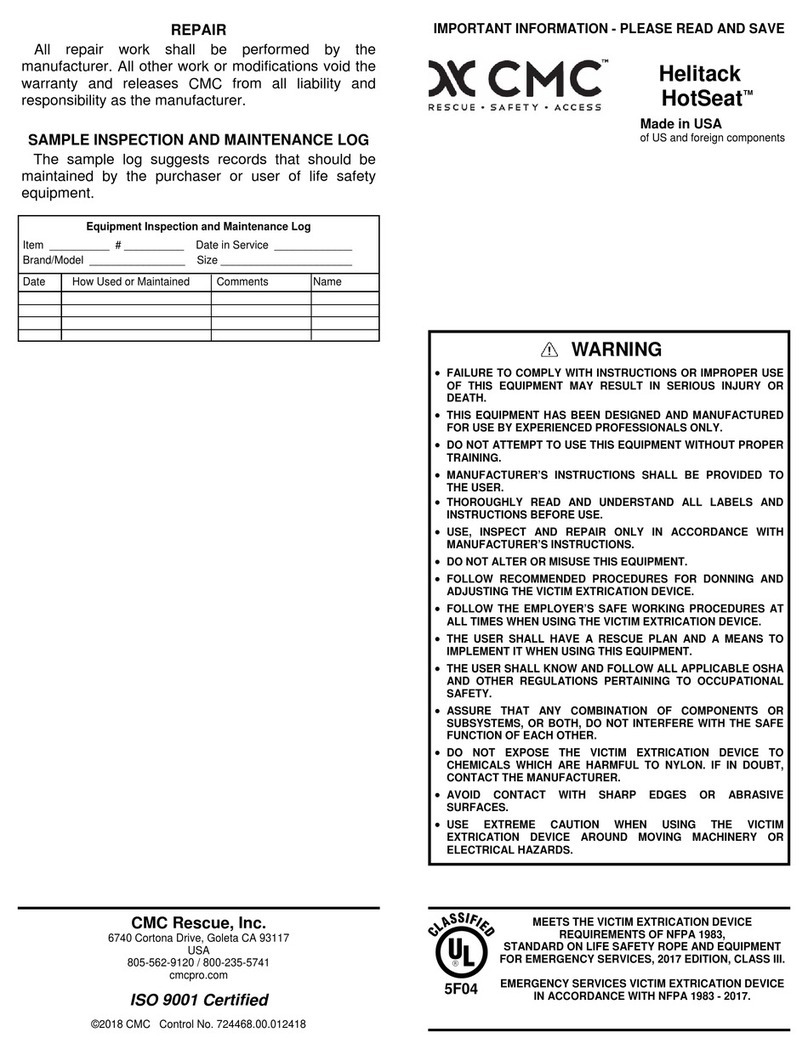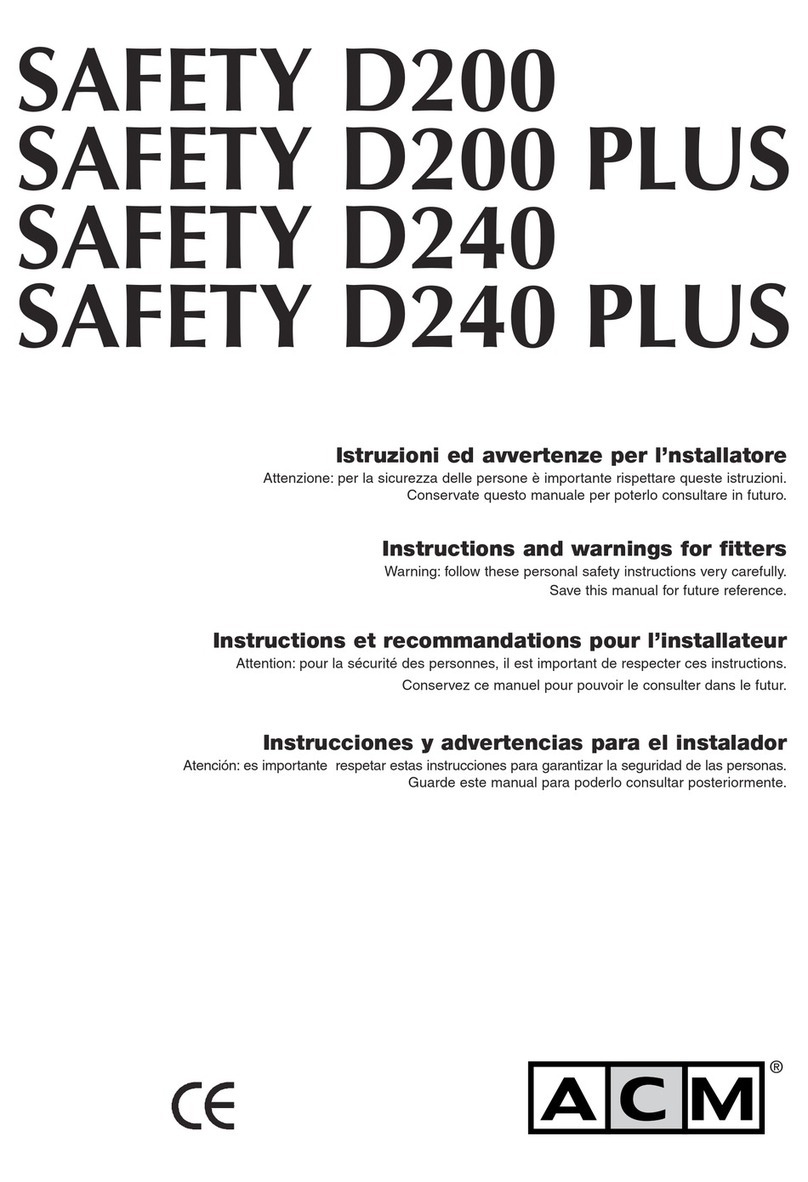
11Section 4
4.2
1. Before disconnecting the unit from the towing
vehicle, drop the two front jacks (top wind). Also
lower to two rear jacks (side wind) about three
quarters of the way down. Refer to steps 1a.
through 1e. in section 4.1 for detailed
instruction on deploying and lowering the jacks.
The jacks must be lowered as outlined
above. Failure to do so will result in the
trailer tipping.
2. Disconnect the running light plug from the
towing vehicle.
3. Disconnect the safety chains from the towing
vehicle.
4. Remove the coupler lock pin and release the
ball coupler latch.
5. Use one of the front jacks to raise the trailer
tongue until it completely clears the ball hitch
of the towing vehicle.
6. Pull the towing vehicle ahead.
7. Position the trailer on the side of the road, as
required.
8. Fully level and stabilize the unit with the four
stabilizing jacks.
9. Proceed to the front of the trailer and
disconnect the running light plug that connects
the tongue to the frame. Excess length of cable
can be wrapped around the tongue to prevent
damage to the wires or plug.
10. Locate the hitch pin that secures the tongue to
the trailer. Remove the cotter pin and slide the
hitch pin out; set aside.
11. Position yourself parallel to the tongue and
stand roughly in the middle of the length of
the tongue.
Use care when removing the tongue as it is
long and can tip/fall to the side easily. Lift
using your knees and not your back.
12. Grasp the tongue and slide it out to fully
remove it from the trailer. Place it in a secure
location (i.e. back of towing vehicle).
13. Insert the hitch pin back in the corresponding
hole in the bumper for safe keeping.
4.3
Ensure all jacks are deployed and the unit is
level before raising the light post. Failure to
do so may lead to tipping of the trailer.
ALWAYS check for overhead power lines or
utility lines in the immediate area to avoid
contact with the light post. Move the unit to
another location if necessary.
1. Proceed to the front of the trailer and locate the
hand winch.
2. Firmly grasp the handle of the winch and turn
it clockwise to raise the light post.
Note: ensure
that a “clicking” noise is heard while cranking
the winch.
3. Reference the two arrow decals (one located on
the light post, the other on the winch mast) for
proper deployment height. When the two
arrows are aligned, the signal housing will be
deployed to the MUTCD recommended height
of 7 feet (as measured to the underside of the
signal housing).
Note: The winch has a built-in
brake to prevent the light post from lowering
automatically. Turn the winch handle counter-
clockwise to lower the light post, as necessary.
4. Proceed to the shoulder side of the trailer and
remove the “STOP HERE ON RED” sign from the
transport position.
5. Proceed to the rear of the trailer and install the
sign in the deployed position (receiving tube
located in corner between rear bumper and
roadside side rail).
